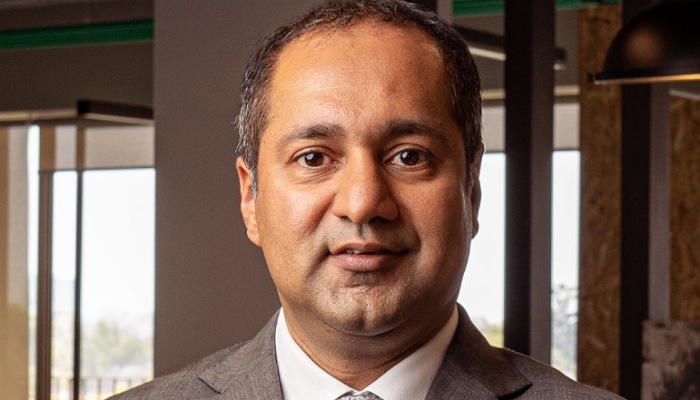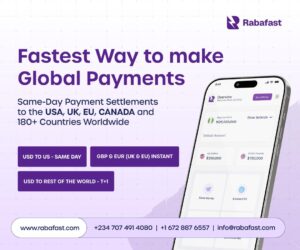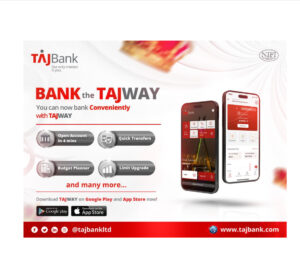Akshay Grover is the group chief executive officer of Cellulant, a payment platform. In this interview with Nairametrics, the former financial adviser at KPMG emphasized how Nigerians can explore opportunities in cross-border trade, the need for a balanced regulation within the banking and the fintech sectors and disclosed how fintech growth in Nigeria, Ghana, and others is affecting Kenya. Excerpts:
What are your major markets in Africa and what do they bring to the table?
The top seven markets for us are Kenya, Nigeria, Ghana, Zambia, Tanzania, Uganda, and Botswana. Over the last couple of years, Kenya’s concentration of revenue has only been going down because the other markets are growing faster than Kenya. So, at one point, Kenya was 50% of the business. It’s now already 25%. And I think it might be 15% of the business in the next six months.
What could be responsible for the drop?
So, it’s just that we’ve gone deeper into Africa. So, it’s not an assumption that Kenya is not growing; Kenya is growing. But then if you’ve got 10 other markets growing, the percentage contribution of Kenya falls.
What is Cellulant’s relationship with the banking industry and regulators?
So ultimately, we are a regulated business, whether it’s a payment service provider license or a Central Bank clearance in the markets where we operate it. Just like anybody else who’s bought a license, you’ve got certain statutory obligations of following rules, regulations, compliance procedures, and systems that you need to implement. We implement those for whichever markets we operate, whether it’s Nigeria, Ghana, Kenya, Zambia, or Tanzania, so that’s on the regulatory front.
On the banking front, banks are our customers, but they are also our partners. So, our customers because when I was describing what I was saying earlier, and not so relevant to Nigeria, because there were no mobile money wallets, but right now just starting. But in Kenya or Zambia, where there’s a large number of mobile money wallets, Cellulant enables the transfer of funds from the bank to the mobile money, and mobile money into the bank, and so the banks pay us for that service. We charge them a fee, they pay us a fee. So they are our customers in that sense. Then they are our partners in a very different sense also, because when I was talking about proximity pay, I go, for example, and put a POS machine there, the POS machine belongs to Zenith Bank or it belongs to Stanbic, or it belongs to DDP in Kenya, etc. And so there we have a relationship, which is a partner relationship because the merchant where it is installed is perhaps a joint customer of Cellulant and the bank, so that’s an example of how the bank is a partner. So that’s kind of our relationship with the banks and the regulator.
Digital payments have seen the highest number of startups. What are the attractions?
I would say maturity; the more maturity of the market and the ecosystem there is, the more players will come. What do I mean by that? You see, innovation is a function of the ecosystem. And by ecosystem, the ecosystem is everything. I mean, you know, it’s a lot of different dimensions. It’s a regulatory framework, like an interbank switch that exists in Nigeria. NIMC is an example of an ecosystem enabler because when you have a switch, which enables seamless transactions to happen, it enables other things to be made on top of that switch, which can be created, right? So that’s the second type of enabler.
The third type of enabler is the availability of capital. Is there enough money at the seed stage, at the pre-series stage, for people to write a cheque of $100,000, $200,000, or $500,000? How many of those cheques are being written? Yeah, because an entrepreneur may not have the capital, you might have an idea, he might have an execution plan, but he may not have half a million dollars to build. So if you make half a million dollars available, right, you’d find that more people are innovating, right? That’s an ecosystem enabler.
Another example of the ecosystem enabler is the age of the user. The younger the population in the country, the more age and demographic profile determine how quickly some of these new products are adopted. Another example of an ecosystem is smartphone penetration. How many people are using smartphones and spending money to buy a smartphone? So I think there is no single answer to saying, why is it more exciting today? It’s a combination of these things, which have come together, which is leading to more innovation. The market is very large. Can there be 100 fintech next year? Yeah, I think there could be 1000 fintech. That’s how big the market size is. Right? So, the answer is, it’s kind of distributed if I can say that.
Critics have argued one needs to be careful in regulating the fintech space, especially in order to preserve innovation. How would you access the regulation of this space?
I think Nigeria is a market; there are a few markets in Africa; Nigeria and Kenya, to me, are the top two where the regulator is quite advanced in their thinking. By advanced, I mean they understand that fintech needs to survive. Banking needs to survive. You cannot kill either, you need a balance for fintech and banking to exist. And collaboration between the two is more beneficial to the end consumer, the system, and to the people. That is what I feel these regulators have realized. So, my take is what I see is that they are taking a differentiated approach, and that is why you have these different licenses, because if you had one type of thinking, then there would not be six types of licenses.
What they are recognizing is that this license this condition, that license that condition, so the fact that you’ve created different layers of licensing itself tells you that the regulator is thinking in the right direction because they are segregating A player from B player from C player and from the biggest license which might be a full banking license, which covers everything, right. So that’s what I would say about regulation in Nigeria.
What are the opportunities for entrepreneurs in cross-border payments?
Very large opportunities. We are already tapping into that by going into the payout space that I was describing earlier, of saying somebody wants to send money from the UK into Ghana, Zambia, and Tanzania.
I think if we can start getting into cross-border trade without the US dollar in the middle, that can be a game changer for this continent. You see, today, when I want to change Ghanaian Cedi to Nigerian Naira, I first need to do Cedi to US dollar, US dollar to Nigerian Naira. And I’m telling you, that’s the most inefficient way of converting two currencies. But for this, you need a little cooperation. Everyone needs to come to the table. And sorry, I don’t mean Cellulant, this has to happen at the Central Bank level, you know, or at the government level, where you say and maybe it will never happen together for all of Africa. But maybe we can start building bridges. Let’s say you build a little lag for West Africa. And you sell to Nigeria, Ghana, you know this part Ivory Coast, Cameroon, maybe. You see, to some extent, Francophone African countries are doing that. They’ve tried to do that by trying to create one currency. And it’s helped them quite a bit. I don’t know if we can go to one currency. But what we could do is enable trade without converting to the US dollar. That itself is a huge opportunity for cross-border trade to grow. And second, it kills this problem of dollar liquidity. Why is there so much demand for a dollar? Why do I need to convert to the dollar? Why do I need to convert to dollars to do business? And this trend has now started everywhere in the world. People are buying oil in local currencies. It never to used happened before. But it started happening thanks to the Russia-Ukraine war. Yeah. So, I think the move has started. How quickly we get onto that road will determine how big this could be in the next two, or three years. It’s going to happen anyway. The question is, how much time? In two years, five years, or in 10 years? What is the timeframe?
What is the future of e-commerce in terms of payments and driving financial inclusion in Nigeria?
So, one of the things we started with, we said is, you see, the African consumer doesn’t trust, doesn’t want to pay? Why? We started analyzing. Is it that he doesn’t want to put his credit card or debit card number on the app? That could be one reason.
The second reason is I want to see, touch, and feel the goods in my house before I pay for them. Yeah. So we listed the reason and we found these are the top two reasons. One is that people are sometimes feeling insecure about putting their card details on the platform. And second is I don’t trust that until the good comes to my house, I’m not going to pay for it. So we started a project, which is actually already now being kick-started, I think in Ghana, Kenya, I think Nigeria. But then we said, the delivery guy comes to your house, to deliver the goods. And it’s cash on delivery. But what he will do is use Tingg (proximity pay) on USSD. So he’ll type *228*564*amount#, and the payment will go from his bank account or mobile money wallet to Jumia for the payment he has come to collect. Or he might also do QR code, he might scan a QR code. So in a way, what we’re trying to do there is convert the cash to digital. At the last moment, you’re still paying cash at the point of delivery, but you’re not paying cash. You’re paying digitally. So that’s the direction we’ve taken to approach this problem.
How would you access data security processes in the sector, sharing your experiences in other African nations?
Number one, there’s 100% compliance with all ISO standards on data privacy and data security. So, ISO 27,001, you just named the standard, I think we will PCI DSS compliance, we will be compliant, partly because we came from a history of working with the banks. And so because we came from that history, our legacy was that we took this stuff a lot more seriously from the beginning, even before we actually became the payment business that we are today. Because the bank said if you want to integrate with me, you don’t comply with this, I’m not ready to work with you. We started a little early on that journey. We had some advantages because of that. So, compliance with all necessary standards is already there.
Second, we also have a lot of external tools, which are anti-money laundering, KYC, all of that stuff, which kind of, in real-time, scans our transactions as they’re happening and throws alerts to us in an automated manner. And then somebody has to go and investigate the alert; saying this alert got created, what is the reason for this alert? You will investigate, you find a reason, right? So, you do that. The third thing is data governance, which is around, some countries are now going on a path like, let me give you an example, Cairo or Egypt is on a path where it says that my customer data should sit in my country. You can do the transaction anywhere on the cloud. But the customer’s data should sit inside Egypt, which now requires you to make an architectural change as a FinTech of saying that where the customer database sits is different from where the processing of the transaction is happening. The processing of transactions might happen on Amazon, on the cloud. Right? But data will sit here. So, because of the fact that we are present in Egypt, because of the fact we are present in Tanzania, that’s another market where this kind of a rule is that we are complying with those rules. And if tomorrow this rule happens in five other countries, we will comply with those countries.
















